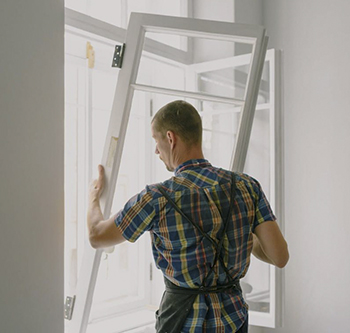Essential Guide to Self Assessment Tax Returns for the Building and Construction Industry
Navigating the world of Self Assessment tax returns can be particularly challenging for those in the building and construction industry. With its unique income streams, varied expenses, and regulatory requirements, understanding how to properly handle your tax affairs is crucial. This guide provides a comprehensive overview of what you need to know to manage your Self Assessment tax returns effectively.
Understanding Self Assessment
Self Assessment is a system used by tax authorities, such as HM Revenue and Customs (HMRC) in the UK, to collect income tax from individuals and businesses who do not have tax automatically deducted from their earnings. For those in the building and construction industry, this typically includes self-employed contractors, subcontractors, and other professionals.
Who Needs to File?
If you’re a sole trader, partner in a business partnership, or a director of a company who also receives income from dividends or has other income not taxed at source, you are required to file a Self Assessment tax return. This applies to a wide range of roles within the construction sector, from builders and electricians to site managers and architects.
Key Components of the Tax Return
Income Reporting: You must report all sources of income, including:
- Payments received for construction work.
- Income from rental properties if applicable.
- Any additional earnings from freelance or consulting work.
Claiming Expenses: Accurate record-keeping is essential for claiming allowable expenses. Common deductions in the construction industry include:
- Tools and equipment costs.
- Materials purchased for specific projects.
- Travel expenses between sites.
- Professional fees, such as those for accountants or consultants.
- Safety equipment and uniforms.
Keep detailed records and receipts for all expenses to ensure they are substantiated and can be claimed.
Calculating Taxable Income: Deduct your allowable expenses from your total income to determine your taxable income. Apply the relevant tax rates to calculate the amount of tax you owe.
Key Considerations
- VAT: If your annual turnover exceeds the VAT threshold, you’ll need to register for VAT and submit VAT returns. Ensure you understand how VAT affects your income and expenses, as it can impact your overall tax liability.
- IR35 Regulations: For contractors working through intermediaries (e.g., limited companies), IR35 regulations may apply. This set of rules determines whether you are operating as a genuine contractor or if your arrangement resembles employment, affecting your tax status.
- Penalties for Late Filing: Missing deadlines for submitting your Self Assessment tax return or paying your tax can result in significant penalties and interest charges. Ensure you are aware of key dates and file your return promptly.
Helpful Tips
- Maintain Detailed Records: Accurate and comprehensive record-keeping is critical. Utilize accounting software or consult a professional to ensure you are capturing all necessary details.
- Seek Professional Advice: Tax regulations can be complex, and the building and construction industry has specific nuances. Engaging a tax advisor or accountant with experience in this sector can help you navigate your obligations and maximize your allowable deductions.
- Stay Informed: Tax rules and regulations can change. Keep up-to-date with any modifications that may affect your Self Assessment tax return by regularly checking HMRC updates or consulting with a tax professional.
Conclusion
Handling Self Assessment tax returns in the building and construction industry requires careful planning and attention to detail. By understanding your reporting requirements, accurately claiming expenses, and staying informed about relevant regulations, you can manage your tax responsibilities effectively and avoid common pitfalls. For many, working with a qualified accountant can be a valuable investment to ensure compliance and optimize tax outcomes.
Featured articles and news
Mixed reactions to apprenticeship and skills reform 2025
A 'welcome shift' for some and a 'backwards step' for others.
Licensing construction in the UK
As the latest report and proposal to licence builders reaches Parliament.
Building Safety Alliance golden thread guidance
Extensive excel checklist of information with guidance document freely accessible.
Fair Payment Code and other payment initiatives
For fair and late payments, need to work together to add value.
Pre-planning delivery programmes and delay penalties
Proposed for housebuilders in government reform: Speeding Up Build Out.
High street health: converting a building for healthcare uses
The benefits of health centres acting as new anchor sites in the high street.
The Remarkable Pinwill Sisters: from ‘lady woodcarvers’ to professionals. Book review.
Skills gap and investment returns on apprenticeships
ECA welcomes new reports from JTL Training and The Electrotechnical Skills Partnership.
Committee report criticises UK retrofit schemes
CIOB responds to UK’s Energy Security and Net Zero Committee report.
Design and construction industry podcasts
Professional development, practice, the pandemic, platforms and podcasts. Have we missed anything?
C20 Society; Buildings at Risk List 2025
10 more buildings published with updates on the past decade of buildings featured.
Boiler Upgrade Scheme and certifications consultation
Summary of government consultation, closing 11 June 2025.
Deputy editor of AT, Tim Fraser, discusses the newly formed society with its current chair, Chris Halligan MCIAT.
Barratt Lo-E passivhaus standard homes planned enmasse
With an initial 728 Lo-E homes across two sites and many more planned for the future.
Government urged to uphold Warm Homes commitment
ECA and industry bodies write to Government concerning its 13.2 billion Warm Homes manifesto commitment.
From project managers to rising stars, sustainability pioneers and more.
Places of Worship in Britain and Ireland, 1929-1990. Book review.























